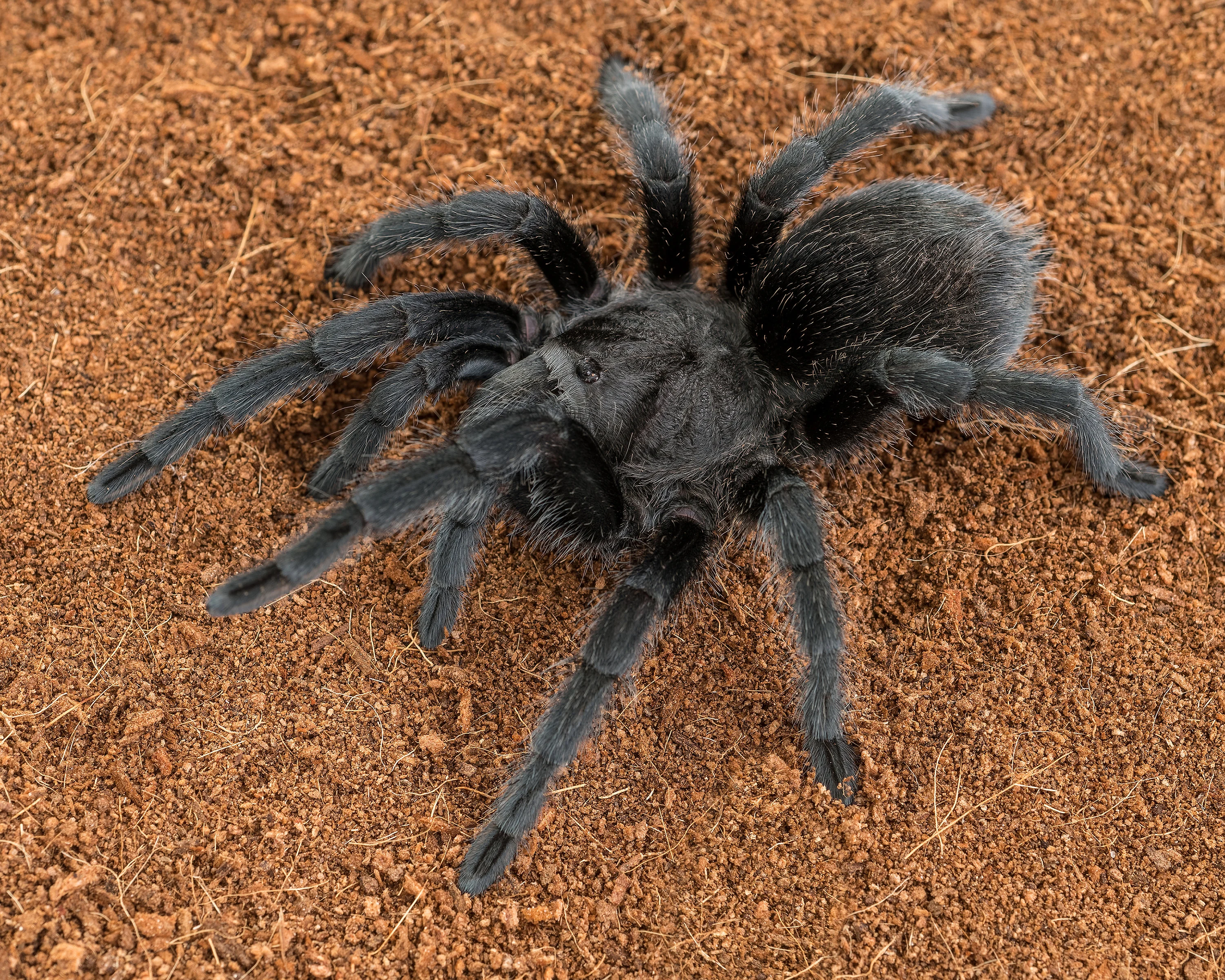Photography Tips for Capturing Grammostola pulchra: Highlighting Their Velvet Texture
Introduction: Capturing the Velvet Black
The *Grammostola pulchra*, or Brazilian Black Tarantula, is renowned for its deep, jet-black coloration and dense, velvety appearance. Photographing this species presents unique challenges and opportunities, especially when trying to capture that signature texture without losing detail in the shadows.
Lighting for Texture
Lighting is paramount when photographing dark subjects and emphasizing texture.
- Soft, Diffuse Light: Avoid harsh, direct light (like direct sunlight or unmodified flash). This creates hard shadows and bright highlights that obscure texture. Use softboxes, diffusers, or shoot on an overcast day or in open shade.
- Off-Camera Flash/Light Source: Using a light source positioned off to the side (e.g., 45 degrees to the side and slightly above) can create subtle shadows across the tarantula’s hairs (setae), enhancing the perception of texture.
- Avoid Direct Frontal Light: Light coming straight from the camera position tends to flatten the subject and minimize texture.
- Experiment with Backlighting/Rim Lighting: A carefully placed light source behind or to the side/back of the tarantula can create a “rim” of light around its edges, separating it from the background and highlighting the fuzzy silhouette.

Focus and Depth of Field
- Focus on the Eyes: As with most animal photography, focusing sharply on the eyes creates a connection and anchor point for the viewer. A tarantula’s eye turret is the key focal point.
- Macro Lens: A dedicated macro lens allows you to get close enough to capture fine details like individual setae.
- Depth of Field (Aperture): Decide how much of the tarantula you want in focus. A wide aperture (e.g., f/2.8, f/4) creates a shallow depth of field, isolating the eyes and blurring the rest. A narrower aperture (e.g., f/8, f/11) keeps more of the spider sharp, potentially enhancing the overall texture but requiring more light or slower shutter speed.
- Focus Stacking (Advanced): For ultimate sharpness across the entire tarantula, multiple shots focused at different points can be merged using software (focus stacking).
Composition and Angles
- Get Low: Shooting at the tarantula’s eye level often creates a more engaging and intimate portrait.
- Fill the Frame: Use a macro lens or crop carefully to make the tarantula the dominant subject, showcasing its details.
- Rule of Thirds: Placing the tarantula or its eyes off-center can create a more dynamic composition.
- Clean Background: Use a simple, uncluttered background (like substrate, cork bark, or a plain surface) to ensure the tarantula stands out.
Good techniques for photographing pet tarantulas involve patience and understanding their behavior.

Ethical Considerations
Safety First: Never stress the tarantula for a photo. Avoid bright flashes directly in its eyes, excessive handling, or placing it in unsafe situations. Photographing it within its enclosure or a secure, controlled environment is often best. Observe its behavior; if it shows signs of stress (threat posture, trying to flee), stop the session.
Capturing the unique beauty of a *Grammostola pulchra* requires careful attention to lighting and focus. By using soft, directional light and precise focusing, you can effectively highlight the deep black color and stunning velvety texture that makes this species so captivating.
Further Reading: Learn about the technique of Focus Stacking on Wikipedia.